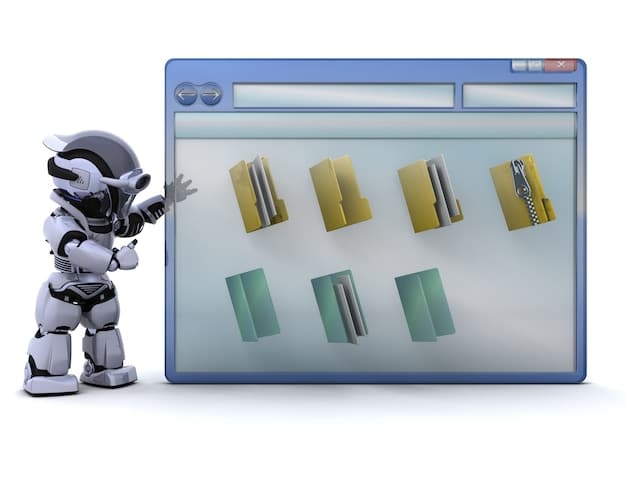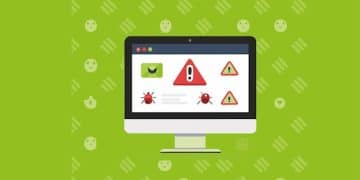Safely Test Software: How to Use a Virtual Machine

Using a virtual machine (VM) to safely test new software involves creating an isolated environment on your computer, allowing you to experiment with programs without risking your main operating system.
Want to test new software without risking your computer’s stability? Learning how to use a virtual machine to safely test new software is the answer. This guide will walk you through the process, step by step.
What is a Virtual Machine and Why Use One?
A virtual machine (VM) is essentially a computer within a computer. It’s a software-based emulation of a physical computer, complete with its own operating system, CPU, memory, and storage. Think of it as a sandbox where you can play with software without affecting your “real” computer.
Why should you bother with a VM? Let’s delve into the benefits.
Isolation and Security
The primary reason to use a VM for testing is isolation. Anything that happens inside the VM stays inside the VM. If the software you’re testing contains malware, viruses, or causes system instability, it won’t affect your host operating system. It’s like having a shield protecting your main system from potential harm.
Testing Different Operating Systems
VMs allows us to test software compatibility is a crucial aspect. VMs allow you to run different operating systems on the same hardware. This means you can test software designed for Windows on a macOS machine, or vice versa. It’s invaluable for developers targeting multiple platforms.
Snapshot and Rollback
One of the most useful features of VMs is the ability to take snapshots. A snapshot is a saved state of the VM at a specific point in time. Before testing software, you can take a snapshot. If something goes wrong during testing, you can easily revert to the snapshot, restoring the VM to its previous, clean state.
- Reduced Risk: Prevents malware and system instability from affecting your main OS.
- Cross-Platform Testing: Allows testing on multiple operating systems without needing separate hardware.
- Easy Recovery: Snapshots enable quick recovery from errors or failed installations.
In summary, a virtual machine provides a safe and isolated environment to experiment with new software, offering peace of mind and flexibility.

Choosing the Right Virtualization Software
Several virtualization software options are available, each with its own strengths and weaknesses. Selecting the right one depends on your needs and technical expertise.
Let’s look at some popular choices.
VMware Workstation Player
VMware Workstation Player is a popular choice for personal use. It’s free for non-commercial use and offers a user-friendly interface. It supports a wide range of operating systems and provides excellent performance. VMware also offers more advanced versions like VMware Workstation Pro for professional users.
VirtualBox
VirtualBox, developed by Oracle, is another free and open-source virtualization solution. It’s a versatile option compatible with Windows, macOS, and Linux. While its interface might not be as polished as VMware’s, it’s a robust and reliable choice for many users.
Hyper-V
Hyper-V is Microsoft’s virtualization platform, built into Windows 10 and Windows 11 Pro, Enterprise, and Education editions. It’s a powerful option, particularly for users deeply embedded in the Microsoft ecosystem. However, it can be a bit more complex to set up compared to VMware or VirtualBox.
- VMware Workstation Player: User-friendly, great performance, free for personal use.
- VirtualBox: Free and open-source, cross-platform compatibility.
- Hyper-V: Powerful, integrated into Windows (Pro, Enterprise, Education editions).
Consider factors like ease of use, operating system support, features, and cost when making your choice. For beginners, VMware Workstation Player or VirtualBox are often recommended.
Setting Up Your Virtual Machine
Once you’ve chosen your virtualization software, the next step is setting up your virtual machine. The setup process is generally similar across different software, but here’s a general overview.
Let’s go ahead and set up the VM.
Installing Virtualization Software
First, download and install your chosen virtualization software. Follow the on-screen instructions, ensuring you have administrator privileges. After installation, restart your computer if prompted.
Creating a New Virtual Machine
Open the virtualization software and look for the option to create a new virtual machine (“New VM”). You’ll be guided through a wizard where you’ll specify the following:
- Name and Location: Provide a name for your VM (e.g., “Test VM”) and choose a location on your hard drive to store the VM files.
- Operating System: Select the operating system you want to install in the VM (e.g., Windows 10, Ubuntu).
- Memory (RAM): Allocate memory to the VM. A general rule of thumb is to give it half of your computer’s RAM, but no more than 8GB unless you have a large amount of memory.
- Hard Disk: Create a virtual hard disk for the VM. You can choose between dynamically allocated (it grows as needed) or fixed size (allocates all space upfront). Dynamically allocated is usually a better choice for flexibility.
Installing the Operating System
After creating the VM, you’ll need to install the operating system. This typically involves providing an ISO file (an image of an installation disc) or a physical installation disc. The VM will boot from the ISO or disc, and you can follow the on-screen instructions to install the OS, just like you would on a physical computer.
Setting up is a simple process that will take you a few minutes.
Configuring Your Virtual Machine for Testing
With your VM created and the operating system installed, it’s time to configure it for optimal testing. This involves several important steps.
Let’s get your new Virtual Machine ready for testing.
Installing Guest Additions/Tools
Most virtualization software offers guest additions or tools – software packages designed to improve the VM’s performance and integration with the host system. These typically include drivers for better graphics, network, and storage performance, as well as features like shared clipboard and drag-and-drop file transfer.
Taking a Snapshot Before Testing
Before installing or testing any software, always take a snapshot of the VM. This creates a restore point that you can revert to if anything goes wrong. Name the snapshot something descriptive, like “Clean Install” or “Initial State.”
Configuring Network Settings
By default, VMs often use a network mode called NAT (Network Address Translation), which allows the VM to access the internet through the host computer’s connection. This is fine for most testing scenarios. However, if you need the VM to be directly accessible on your network (e.g., for testing server software), you might need to configure bridged networking, assigning the VM its own IP address on the network.
- Install Guest Additions: Improves performance and integration with the host system.
- Take Snapshots: Creates restore points before testing.
- Network Configuration: Choose the best network mode for your testing needs.
Proper configuration ensures that your VM is ready for safe and effective software testing.

Safely Testing New Software in Your VM
Now comes the moment of truth: testing your software within the VM. Here’s how to approach it safely and effectively.
Now you will be able to test your software safely.
Installing the Software
Install the software you want to test just as you would on a physical computer. Download the installation file and run it within the VM. Pay attention to any prompts or warnings during the installation process.
Monitoring System Performance
While the software is running, monitor the VM’s performance using the task manager or resource monitor. Look for signs of excessive CPU usage, memory leaks, or disk I/O. This can help identify potential performance issues or bugs in the software.
Testing Different Scenarios
Thoroughly test the software by using all its features and functionalities. Try different input values, configurations, and usage scenarios. Look for errors, crashes, or unexpected behavior.
Documenting Your Findings
Keep a detailed record of your testing activities, including the software version, test scenarios, results, and any issues encountered. This documentation will be invaluable for debugging and reporting problems to the software developer.
Testing is all about finding answers and solutions.
Recovering from Issues and Resetting Your VM
Inevitably, during testing, you may encounter issues that compromise your VM. That’s where snapshots come to the rescue.
Snapshots are the most reliable way to recover from issues.
Reverting to a Snapshot
If the software you’re testing causes system instability or throws errors, the easiest way to recover is to revert to a snapshot. Shut down the VM and, in your virtualization software, find the option to revert to a specific snapshot. This will restore the VM to the state it was in when the snapshot was taken.
Uninstalling the Software
If the issue isn’t severe enough to warrant reverting to a snapshot, you can try uninstalling the problematic software. Use the VM’s control panel or settings menu to uninstall the software.
Creating New Snapshots for Each Test
For more complex testing, consider taking a new snapshot before each major test or software installation. This allows you to easily isolate problems and revert to a clean state for each test scenario.
- Revert to Snapshots: The quickest way to recover from major issues.
- Uninstall Software: For less severe problems, try uninstalling the problematic software.
- New Snapshots: Take snapshots before each test for easier isolation.
Knowing how to recover from issues ensures that you can continue testing without losing significant progress.
Advanced Virtual Machine Techniques for Software Testing
Once you’re comfortable with the basics, you can explore advanced techniques to enhance your software testing capabilities.
These advanced features can significantly improve your testing process.
Cloning VMs
Cloning allows you to create an exact copy of an existing VM. This is useful for testing software in different configurations or for distributing a pre-configured testing environment to other testers. There are two types of clones: full clones (an independent copy) and linked clones (which share some files with the original VM to save disk space).
Automated Testing
You can integrate VMs with automated testing frameworks like Selenium or JUnit. These frameworks allow you to write scripts that automatically run tests within the VM, providing a more efficient and repeatable testing process.
Network Simulation
Some virtualization software offers network simulation features, allowing you to simulate different network conditions, such as latency, packet loss, or bandwidth limitations. This is valuable for testing how software performs under various network scenarios.
Exploring and leveraging these advanced features can significantly enhance your software testing capabilities and efficiency.
| Key Point | Brief Description |
|---|---|
| 🛡️ Isolation and Security | VMs isolate software, preventing harm to your host OS. |
| 🔄 Snapshots | Snapshots save VM states, enabling easy recovery. |
| 🌐 Network Settings | Configure network settings for internet access and network testing. |
| 🛠️ Guest Additions | Install to improve VM performance. |
Frequently Asked Questions
▼
VMware Workstation Player and VirtualBox are excellent choices for beginners due to their user-friendly interfaces and comprehensive features. Both offer free versions for personal use.
▼
A general recommendation is to allocate about half of your computer’s RAM to the VM. However, avoid allocating more than 8GB unless your system has a substantial amount of memory.
▼
A snapshot is a saved state of your virtual machine at a specific point in time. It’s crucial because it allows you to revert to a previous, clean state if something goes wrong during software testing.
▼
Yes, you can. Virtual machines enable you to run multiple operating systems (e.g., Windows, macOS, Linux) simultaneously on the same physical hardware, making it ideal for cross-platform testing.
▼
Yes, virtual machines provide an isolated environment, ensuring that any malicious software or system instability within the VM won’t affect your host operating system, making it a secure testing environment.
Conclusion
By mastering how to use a virtual machine to safely test new software, you gain a powerful tool for protecting your system and experimenting with confidence. Whether you’re a developer, IT professional, or simply a curious user, VMs offer a secure and flexible environment for exploration and innovation.





